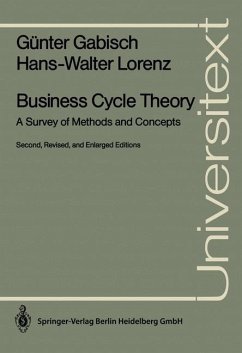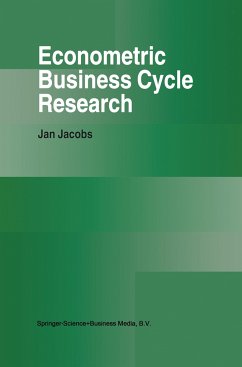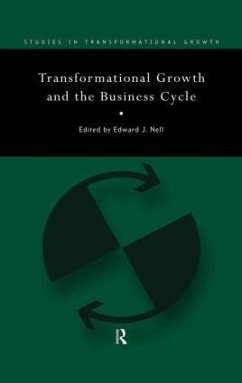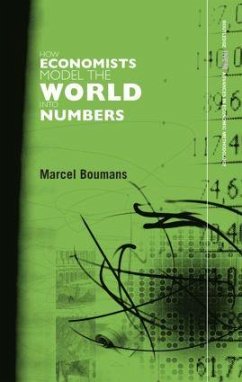
Equilibrium Business Cycle Theory in Historical Perspective

PAYBACK Punkte
21 °P sammeln!
This book presents a historical investigation of the theoretical development of contemporary Equilibrium Business Cycle Theory (EBCT).This book presents a historical investigation of the theoretical development of contemporary Equilibrium Business Cycle Theory (EBCT). The author examines the central features of the EBCT by tracing both the history of business cycle theory and the history of econometrics. These historical analyses make clear two central principles of the EBCT: its optimization foundation and its economic strategy. Following along these lines, the author argues that the EBCT suc...
This book presents a historical investigation of the theoretical development of contemporary Equilibrium Business Cycle Theory (EBCT).
This book presents a historical investigation of the theoretical development of contemporary Equilibrium Business Cycle Theory (EBCT). The author examines the central features of the EBCT by tracing both the history of business cycle theory and the history of econometrics. These historical analyses make clear two central principles of the EBCT: its optimization foundation and its economic strategy. Following along these lines, the author argues that the EBCT succeeds the tradition of the Austrian cycle theory that attempted to incorporate the cycle with classical equilibrium doctrine. He further argues that the EBCT's econometric strategy is only a child of the Cowles commission method. Presenting a fresh viewpoint of interwar macroeconomics in very readable style, this book brings the period back into the heart of macroeconomic thinking today.
Table of contents:
Acknowledgments; 1. Introduction: equilibrium business cycle theory; 2. The classical tradition and business cycle theory; 3. The econometric approach to business cycles; 4. Hayek, the Cowles Commission, and equilibrium business cycle theory; 5. Contemporary trends in macroeconometrics; 6. Conclusion; References; Index.
This book presents a historical investigation of the theoretical development of contemporary Equilibrium Business Cycle Theory (EBCT). The author examines the central features of the EBCT by tracing both the history of business cycle theory and the history of econometrics. These historical analyses make clear two central principles of the EBCT: its optimization foundation and its economic strategy. Following along these lines, the author argues that the EBCT succeeds the tradition of the Austrian cycle theory that attempted to incorporate the cycle with classical equilibrium doctrine. He further argues that the EBCT's econometric strategy is only a child of the Cowles commission method. Presenting a fresh viewpoint of interwar macroeconomics in very readable style, this book brings the period back into the heart of macroeconomic thinking today.
Table of contents:
Acknowledgments; 1. Introduction: equilibrium business cycle theory; 2. The classical tradition and business cycle theory; 3. The econometric approach to business cycles; 4. Hayek, the Cowles Commission, and equilibrium business cycle theory; 5. Contemporary trends in macroeconometrics; 6. Conclusion; References; Index.














